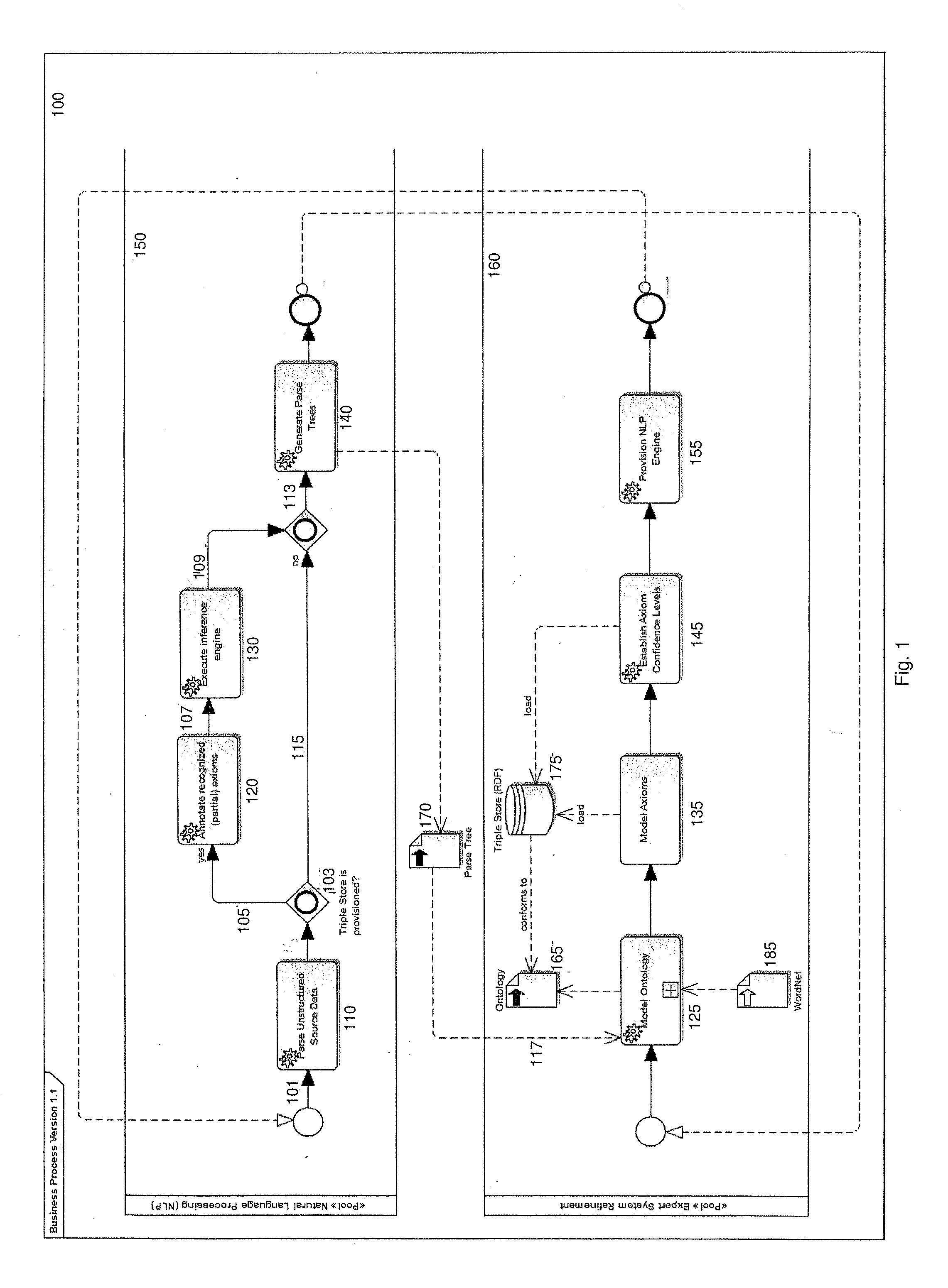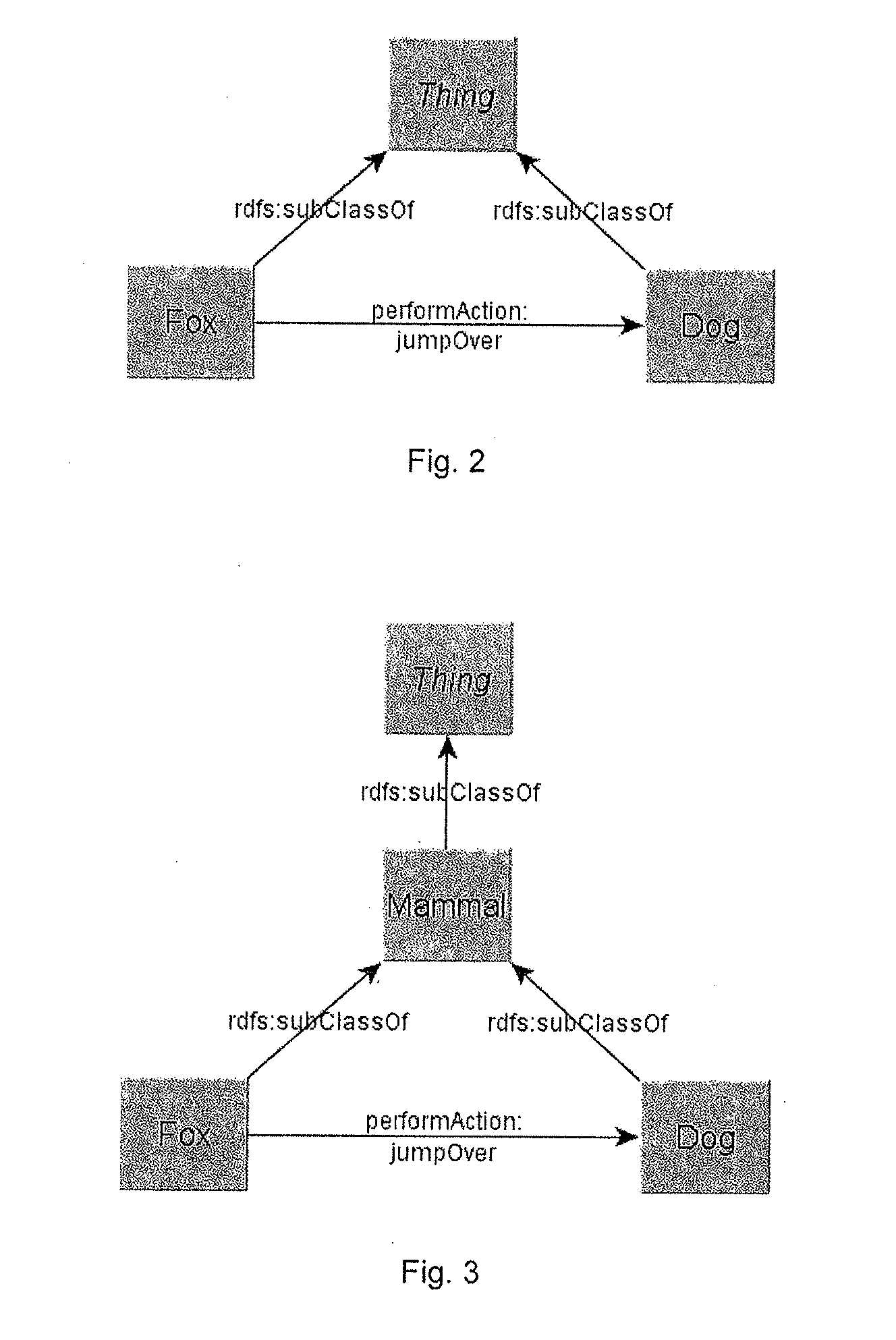Axiomatic Approach for Entity Attribution in Unstructured Data
a technology of entity attribution and unstructured data, applied in the field ofontology modeling, can solve the problems of conventional solutions, which do not demonstrate how a predicate can be applied to other entities, within a given degree of confiden
- Summary
- Abstract
- Description
- Claims
- Application Information
AI Technical Summary
Benefits of technology
Problems solved by technology
Method used
Image
Examples
Embodiment Construction
[0012]As will be described further herein, through the use of Natural Language Processing (NLP), Ontology modeling and Triple stores (RDF graphs), one embodiment demonstrates one or more of the following: (1) how NLP annotations lead to automated construction (or refinement) of an Ontology model; (2) the use of external sources to supplement the Ontology model; (3) the derivation of basic axioms from the Ontology model; (4) a method for expanding each of the axioms into multiple axioms with either wider or narrower semantic application; (5) association of a confidence level to the original axiom (step 3) and each expanded axiom (step 4); (6) provisioning the NLP engine with the axiom data (from step 5); and (7) repeat Step 1, with the benefit of new axiom data.
[0013]As used herein, “Natural Language Processing (NLP)” is the semantic and syntactic annotation (tagging) of data, typically unstructured text. Syntactic annotation is based on grammatical parts-of-speech and clause structu...
PUM
 Login to View More
Login to View More Abstract
Description
Claims
Application Information
 Login to View More
Login to View More - R&D
- Intellectual Property
- Life Sciences
- Materials
- Tech Scout
- Unparalleled Data Quality
- Higher Quality Content
- 60% Fewer Hallucinations
Browse by: Latest US Patents, China's latest patents, Technical Efficacy Thesaurus, Application Domain, Technology Topic, Popular Technical Reports.
© 2025 PatSnap. All rights reserved.Legal|Privacy policy|Modern Slavery Act Transparency Statement|Sitemap|About US| Contact US: help@patsnap.com



